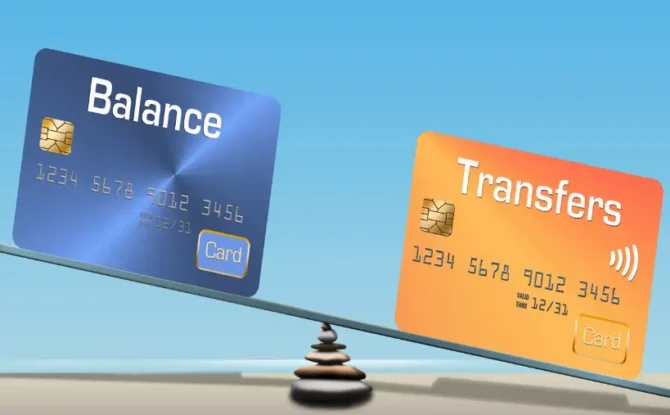
The Top 5 Best Balance Transfer Credit Cards
Introduction
Navigating the vast landscape of credit cards can be overwhelming, especially when you’re seeking to optimize your financial strategy. One invaluable tool at your disposal is the balance transfer credit card. But what exactly does it entail, and why should it be a consideration in your financial planning?
What is a Balance Transfer?
It involves transferring your existing credit card debt to a new card with a lower interest rate. This can be a game-changer, helping you save on interest payments and pay off your debt more efficiently.
Why Consider a Balance Transfer?
Are you weary of high interest rates chipping away at your budget? It could be your solution to substantial savings. By consolidating your debt onto a card with a lower interest rate, you can regain control of your finances.
How Does it Work?
They are relatively straightforward. You apply for a new credit card with a lower interest rate, transfer your existing balance to the new card, and enjoy the benefits of reduced interest payments.
The Benefits of Opting for Balance Transfer Credit Cards
Balance transfer credit cards offer a range of advantages, including lower interest rates, simplified debt management, and potential savings. Let’s explore the top 5 credit cards that shine in this competitive arena.
Top 5 Best Balance Transfer Credit Cards
- Chase Freedom Unlimited
- Offer: Chase Freedom Unlimited typically offers a promotional period with a 0% APR on balance transfers for a specified number of months, often ranging from 12 to 18 months.
- Fee: A fee may apply, usually around 3% to 5% of the transfer amount.
- Features: Besides the offer, the card often includes cashback rewards on purchases, no annual fee, and a sign-up bonus for new cardholders.
- Citi Simplicity Card:
- Offer: Citi Simplicity Card commonly provides a 0% APR on balance transfers for an introductory period, potentially extending up to 21 months.
- Fee: The fee is applicable, typically around 3% to 5% of the transferred amount.
- Features: The card is known for its straightforward features, no annual fee, and no late payment fees.
- Discover it Balance Transfer:
- Offer: It often features a 0% APR on balance transfers for an introductory period, typically ranging from 12 to 18 months.
- Fee: The fee may be typically in the range of 3% to 5%.
- Features: The card is recognized for its cashback rewards, no annual fee, and the “Cashback Match” program that matches the cashback earned in the first year.
- Bank of America® Cash Rewards Credit Card:
- Offer: Bank of America® Cash Rewards Credit Card may provide a promotional 0% APR on balance transfers for a certain introductory period.
- Fee: The fee is applicable, often around 3% to 5%.
- Features: The card includes cashback rewards, a welcome bonus, and the potential to earn more rewards based on your preferred category.
- Wells Fargo Platinum Card:
- Offer: The Wells Fargo Platinum Card commonly features a 0% APR on balance transfers for a specific introductory period.
- Fee: The fee may apply, typically around 3% to 5%.
- Features: This card is known for its focus on balance transfers and providing benefits like cell phone protection.
How to Choose the Right Balance Transfer Card
Choosing the right balance transfer card depends on your specific financial goals and preferences. Consider factors like introductory APR, ongoing interest rates, rewards programs, and any associated fees.
Tips for Successful Balance Transfers
- Check Your Credit Score: A higher credit score increases your chances of approval for the best cards.
- Understand the Terms: Carefully read and comprehend the terms and conditions of the balance transfer offer.
- Pay on Time: Timely payments are crucial to maintaining the benefits of your balance transfer.
Common Pitfalls to Avoid
- Ignoring Fees: Be aware of balance transfer fees that could offset your potential savings.
- Accumulating New Debt: Resist the temptation to accumulate new debt on your balance transfer card.
- Overlooking Introductory Period End: Plan your payments before the introductory period ends to avoid higher interest rates.
Conclusion
In conclusion, finding the optimal balance transfer credit card can strategically enhance your financial well-being. By thoughtfully evaluating your options and grasping the intricacies of each card, you can embark on a journey toward financial freedom. Choose wisely, manage your debt responsibly, and witness your savings grow.
FAQs
Q1: Can I transfer multiple balances onto one card?
- Yes, many balance transfer cards allow you to consolidate multiple balances onto a single card, streamlining your repayment process.
Q2: Will a balance transfer affect my credit score?
- Initially, there may be a slight impact due to the inquiry, but in the long run, successfully managing a balance transfer can positively impact your credit score.
Q3: Are there any fees associated with balance transfers?
- Some cards may charge some fee, typically a percentage of the transfer amount. Be sure to check the terms before proceeding.
Q4: Can I transfer balances between cards from the same issuer?
- In most cases, you cannot transfer balances between cards from the same issuer. Each card comes with its own terms and conditions.

